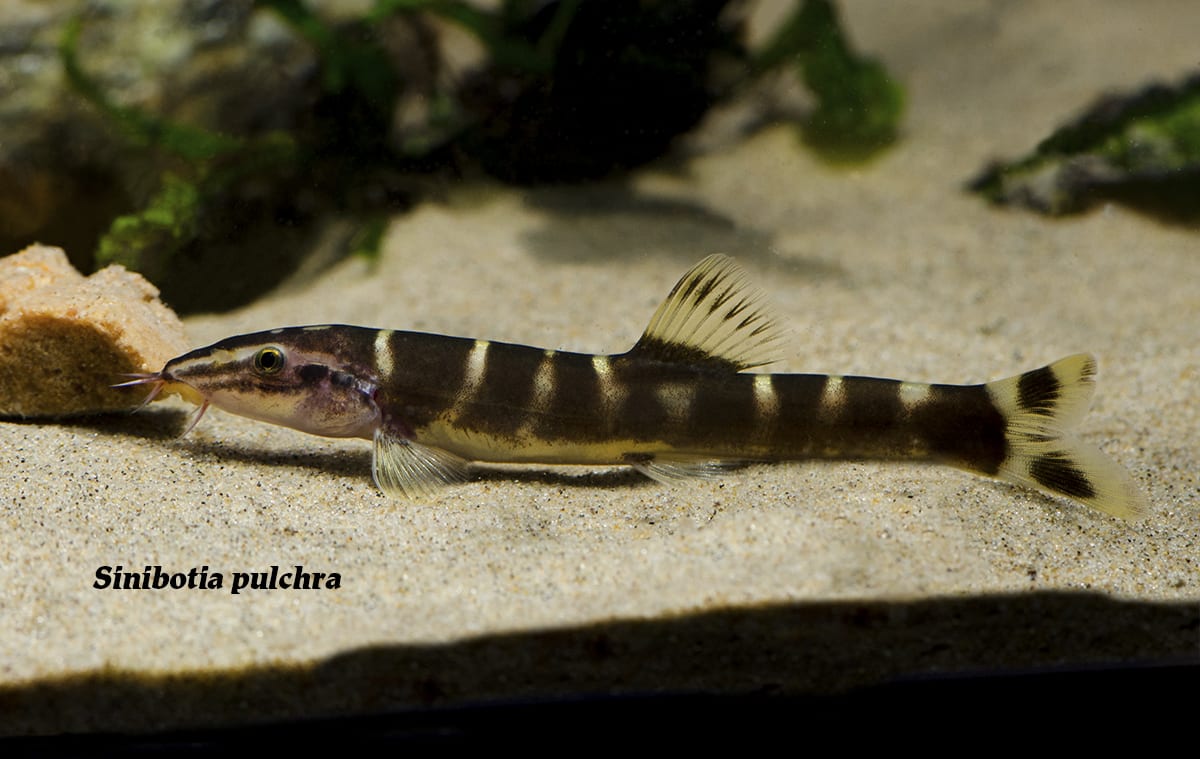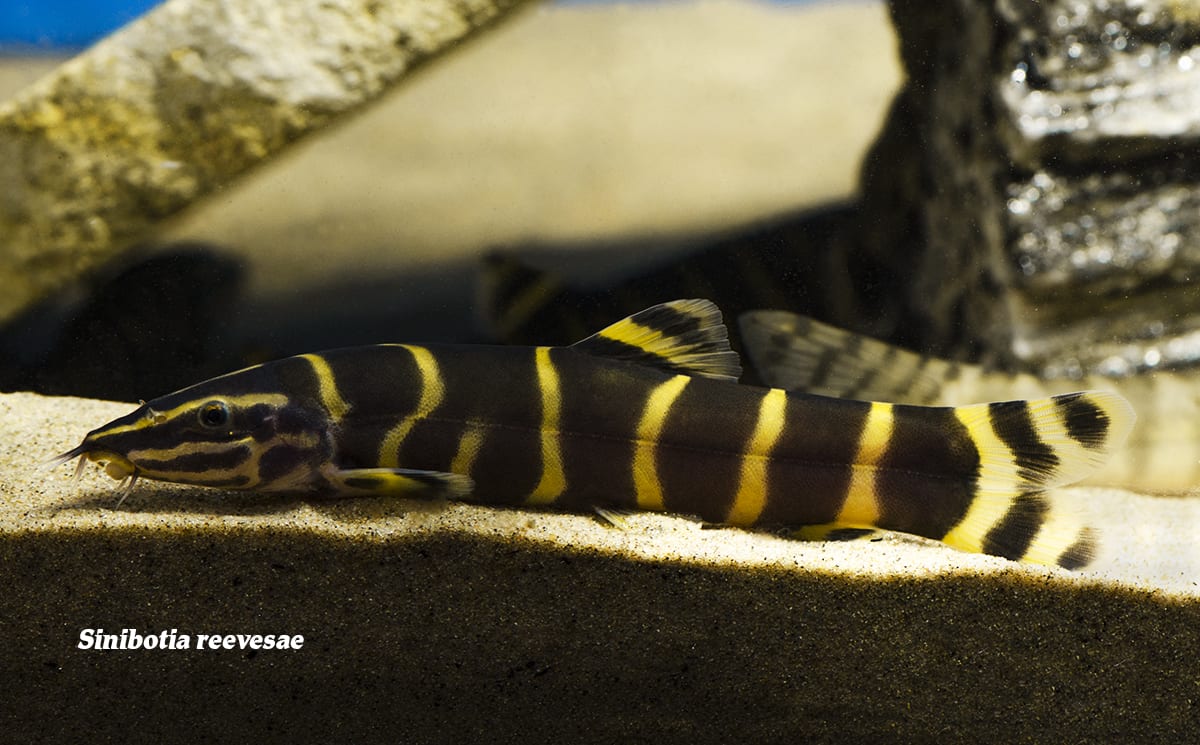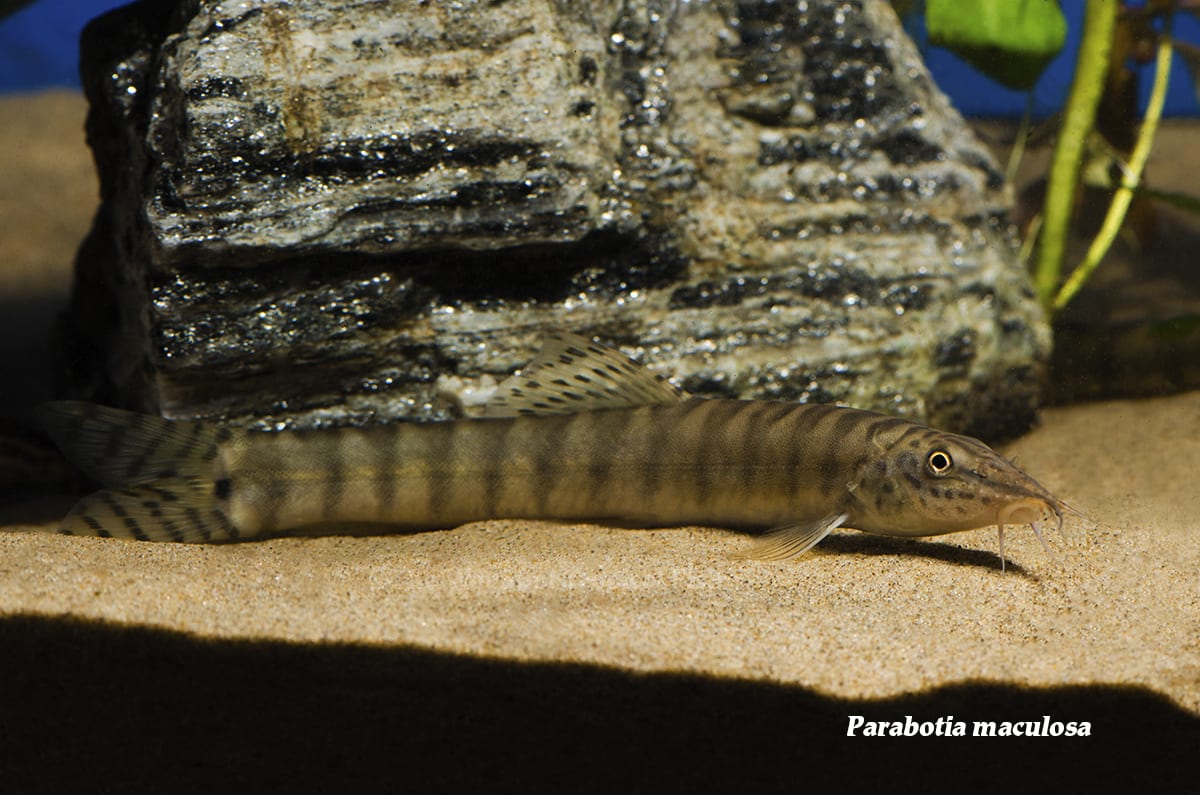Friends in Loach Places
Friends in Loach Places
Slinking from dark hiding places to sift tasty tidbits from bottom substrate of the fast-flowing, clear-water streams of Asia is a family of long-time aquarium favorites. Loaches are popular in the hobby for keeping tank bottoms clean, easy care, peaceful natures, and charismatic group dynamics. Scientists have also found a fascination for Chinese loach species. Using field studies and phylogenetic research they paint a dynamic evolutionary history born from regular combination and separation of natural habitats. Hailing from complex systems of streams and tributaries of the major rivers in China, are a group of ever-changing, moving, and separating sympatric loach species. Previously classified in the genus Botia, these bottom dwellers were placed atop a new branch within the genera Sinibotia, and Parabotia in 2002, due to a confluence of morphological differences. These loaches all share a fusiform shape, with elongated, cylindrical bodies that taper at both ends like a spindle, forked caudal fins, and ossified swim bladders. Studies on this new grouping, however, are still very much in progress, and not a lot of information about these new genera are documented yet. This is great news for those of us who appreciate contributing and sharing knowledge and experiences with our aquariums full of rare and unknown species. A handful of great options from our loach offerings include Sinibotia robusta, Sinibotia pulchra, Sinibotia reevesae, and Parabotia maculosus.
Loaches of these genera spend the majority of their days in hiding, squeezing into dark cracks and crevices. Tanks should include variety of furnishings, the type of which is largely up to personal taste. Keep in mind, furnishings should be free of sharp edges that may slice their delicate bodies, and these swimmers are liable to jump, so tanks should be equipped with tight-fitting lids. The rest of their time is spent scouring tank bottoms for tasty morsels, which requires soft, sandy substrate. Arguably the most exciting part of keeping these loaches is when they venture out for feeding time. Group dynamics become clear as these fish grow comfortable in their captive settings; the most boisterous individuals venturing into the water column to snag extra food bits. Gregarious by nature, they should be kept in groups of 4 or more, and are quite peaceful with many species that are tolerant of the same water conditions. Optimal tanks mates include pelagic cyprinids and other botiid loach species in very large aquaria. Field surveys indicate they are benthic predators, feeding largely on aquatic invertebrates and small fishes, and they are mostly adventurous with their eating habits in captivity. They will accept a variety of sinking pellets and prepared foods, but should be offered regular live and frozen meals. With a strong preference for clear and well-oxygenated waters and an intolerance for organic waste buildup, these fish should be introduced only to mature tanks with water pumps. Waters should be maintained with temperatures between 68 and 78°F, pH of 6.5 to 8.0, and hardness of 36 to 268 ppm.
Scientific NameSinibotia robusta
Common NameChinese Kansu Loach
Temperature / pH68 to 78°F / 6.5 to 8.0 pH
Native LocationYong & Pearl Rivers
Preferred DietSinking foods
Scientific NameSinibotia pulchra
Common NameChinese Golden Zebra Loach
Temperature / pH68 to 78°F / 6.5 to 8.0 pH
Native LocationVietnam
Preferred DietSinking foods
Found predominantly in the moderately flowing stretches of streams and tributaries of the Yong and Pearl Rivers is S. robusta. Also known as “Chinese Kansu Loaches”, these botiids reach about 4 inches in length, and exhibit striking black and yellow banding along their spindle-shaped bodies. A sympatric species, and very closely related, are S. pulchra. Found swimming the same habitats and extending into streams of northern Vietnam, “Chinese Golden Zebra Loaches” tend to be slightly larger with yellow and black markings that resemble the pattern of a Zebra’s hide. Once swimming the same habitats as their genetic cohorts, S. reevesae are now isolated in restricted regions of the Yangtze River in southwestern China. These “Chinese Reevesae Loaches” maintain the black and yellow coloration, though their yellow bands are thinner, and more delicately-sized bodies.
Scientific NameSinibotia reeversae
Common NameChinese Reeversae Loach
Temperature / pH68 to 78°F / 6.5 to 8.0 pH
Native LocationYangtze River
Preferred DietSinking foods
Scientific NameParabotia maculosa
Common NameNone
Temperature / pH68 to 78°F / 6.5 to 8.0 pH
Native LocationSoutheast Asia
Preferred DietSinking foods
Often collected alongside Sinibotia specimens in the wild is P. maculosa. The largest loach species in today’s line-up, these botiids reach nearly 6 inches in length, and exhibit more subtle coloration, with light bodies, dark banding, and checkered fins.
Looking to contribute to hobbyist-headway, and to observe and report on a widely new and exciting loach species? Call us up at the Wet Spot today, to find the best loach friends for your mature tanks!



